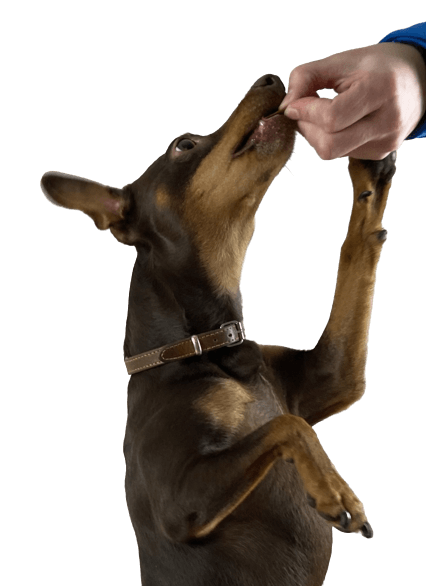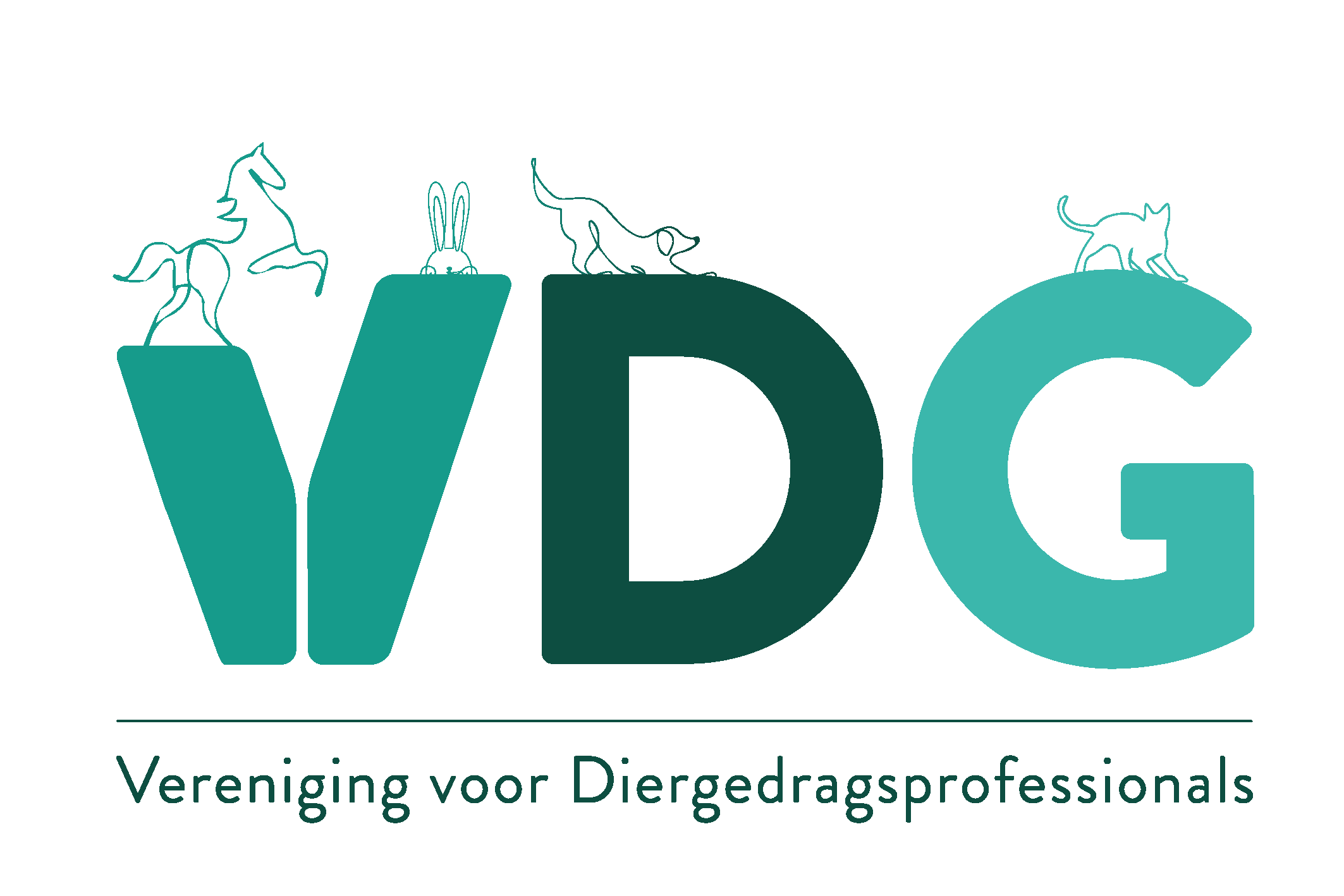Author: Kristof Voet
In training and raising a dog, self-restraint is an important factor. In this blog, we take a closer look at this fact.
The concepts of self-restraint and impulse control are often mentioned in the same breath, but this is unjustified and wrong. We will first briefly go over the differences so that you get a good idea of the characteristic features of each term, and then provide tips on how to get started with impulse control.
Impulse control.
Impulse control is best described as the innate ability to resist natural impulses. In dogs, bite inhibition is a good example: for example, a puppy learns how hard it can bite with its sharp puppy teeth before it hurts someone.
The amount of impulse control is an innate trait that varies from individual to individual and develops very early on. Moreover, it is also breed-specific; for example, a Malinois shepherd has a lower impulse control compared to a golden retriever, and a shepherd will jump into action faster. This is also why a Malinois shepherd is a better guard dog!
Another important factor is time-related: the degree of impulse control in an individual, be it a dog or a human, is not always the same at every moment. As a human, you can recall enough situations to yourself that you could not tolerate much after coming home dead tired from work, for example. In these, the fatigue and mental exhaustion lowered your impulse control. This while at other times we would have reacted completely differently to the same situation.
We see the same effect in a dog: dogs that are over-stimulated during the day and have had too little or no sleep, for example, become ‘unreasonable’, so to speak, and no longer listen well at all, or become very obnoxious and pushy. In their case, too, the combination of overstimulation and (over)fatigue has led to a lowering of impulse control.
Impulse control happens in the prefrontal cortex and glucose is used for this. Glucose will always fluctuate somewhat in terms of the amount available in the body. In a puppy, for example, the prefrontal cortex is still developing, which makes people sometimes expect too much from their puppy when it is not yet physically capable of impulse control. And that is now often the problem with puppies, people especially expect too much from them! They should not jump up, should not bite, should not urinate in the house, should not bark, should not pull the leash...
Even in the often more old-fashioned dog schools, puppies are invariably still expected to keep their full attention, and not want to go out and play with the other doggies, or go exploring, which are thus effectively unreasonable demands; it's like the kindergarten expecting your toddler to sit on a chair for eight hours a day and attentively practise language and maths...
So impulse control is innate and race- but also individual-specific, which means you cannot change it. What can be changed is the emotional response to an impulse and this then is self-restraint!
"Impulse control is thus innate (...), which means you cannot change it. What can be changed is the emotional response to an impulse (...)!"
Self-restraint
Self-restraint can best be described as curbing natural impulses of one's own accord. It is by far the most important thing you can teach your dog, because it is applicable in so many different day-to-day situations.
So you can teach your dog to always calmly wait for permission from the owner before he can start eating, or to go through a door, to go for a walk, to greet someone calmly, when you want to refill a thinking game or sniffing mat, ...
By training self-restraint, you are going to teach a dog to give a different response than what he would naturally do in response to a particular impulse. For example, suppose your dog is in the habit of jumping up to greet a person he knows well, and possibly knocks them over because of this behaviour. By training self-restraint, we can teach the dog to keep all four paws on the ground and greet the person calmly. As a reward for this, he gets a delicious biscuit.
By training self-restraint, we will teach the dog to make good choices in certain situations, which will at the same time ensure that the dog will not, or less often, perform undesired behaviour because he has learned what is expected of him.
This automatically also creates a better bond with your dog, because mutual understanding is increased. Indeed, dog and owner work together, in a way that is pleasant for both. The dog is not frustrated because he knows what is expected of him, and this also makes the dog calmer in the head. Finally, the process helps reduce any stress in the animal.
Surely you can also achieve this through punishment?
At first glance, you might reason this way, but when punishing unwanted behaviour, a dog is mainly going to learn what it is not allowed to do, without it being clear to it what it should do next. This leads to insecurity, possible anxiety and stress, and invariably results in a worse bond between dog and owner. Often, frequent punishment results in what we call acquired helplessness, a state in which the dog no longer undertakes anything and undergoes everything, thinking that he cannot change his fate anyway. Whatever he does or does not do, punishment can follow at any moment! Acquired helplessness in dogs is more common than you might suspect, we see it especially in dogs that have been raised ‘with a hard hand’, and often such an animal is mistaken for a ‘good dog’, this while the dog in question is anything but happy; the dog lives in its shell, so to speak!
So the only correct method is to teach your dog to voluntarily and automatically communicate with you as the owner before just following all his natural impulses, and to do so without forcing him.
The difference between commanding and self-restraint
The big difference between asking the dog a certain command or asking him for self- restraint is that the owner himself does not say anything during a self- restraint exercise; the owner simply waits until the dog has made the right choice and then rewards this extensively. So it is up to the dog to think for itself!
Always make sure your dog doesn't get frustrated during training and, if necessary, take a step back in training if you see he doesn't understand. Be sure not to practise for too long because self-control exercises are very intensive for a dog!
Some recommendations for successful training
Crucial is ‘management’, where you are going to prevent things from going wrong. Do not ask for self- restraint from your dog when you know in advance that he will not be able to do it, because he is too excited or tired, for example. Also, make sure your dog cannot make a wrong choice first and then reward the right choice, as this could potentially lead to a "behavioural chain" (unwanted behaviour followed by desired behaviour leading to a reward. For example: your dog breaks out to the neighbours, you call the dog back and when he comes back he gets a treat. So when the dog gets a craving for a treat, he may decide to break out to the neighbour's garden, then return and get the treat. The dog reasons: to get a treat, I must first go to the garden next door!). The dog thus teaches itself that the wrong choice is part of the exercise that leads to a reward.
Specifically for puppies, it is important to know that their brain is still developing, and it is therefore best to do adapted self-restraint exercises. In addition, make sure you have a good daily routine with sufficient rest periods of 18 to 20 hours of sleep, which will automatically reduce the pup's unwanted behaviour. It is best to train with a pup when he is just awake and well rested, not when he should actually be going back to sleep, because that is when he will be able to learn the most.
Generally speaking, you can say that impulse control can be raised, and it is up to the dog to think about making the right choice, not up to the owner to tell him the right choice. That way, you create the best bond between you, one founded on mutual understanding and trust, thanks to clear and straightforward communication.
Kristof Voet has been an administrative and logistics employee of Pettherapy.be since 2021. He worked as a volunteer at the animal shelter until 2022, and for this he followed the Asylum Employee training organized by the Flemish Government.





